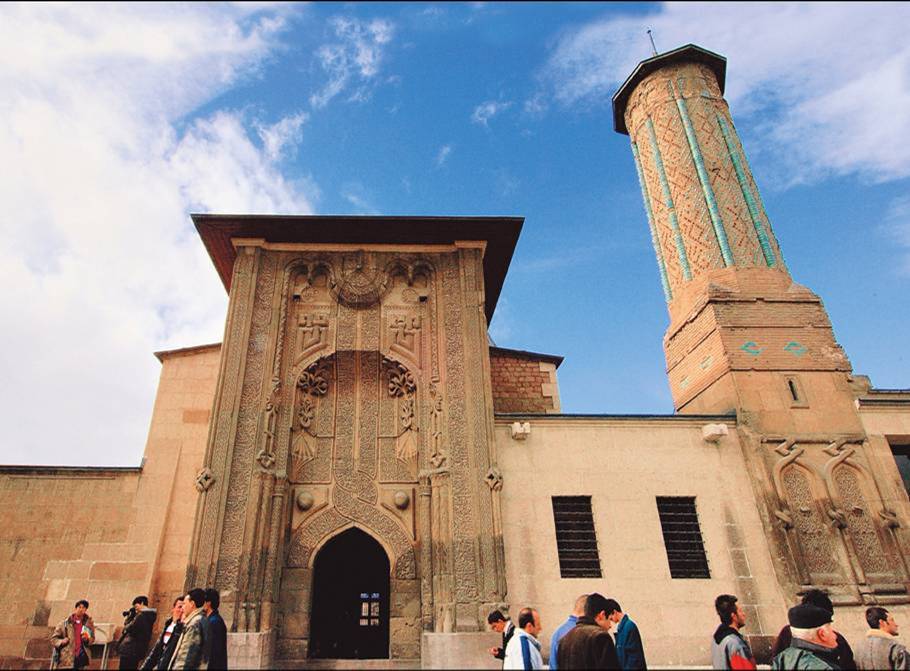
Ince Minaret Madrasa
Konya Province is in the Selçuklu District, west of Alaeddin Tepesi. The Seljuk Sultan II. Izzeddin was built by Ata Fahreddin Ali at the time of Keykavus in 663 H (1264 AD) to teach hadith science.
The architecture is Keluk bin Abdullah. Darü-l Hadith Seljuk Devriin’s courtyard is in the closed groups of medres. He’s single eyvan. The crown on the east is one of the most beautiful examples of Seljuk Devri stone workmanship. The three columns on both sides of the entrance arch are decorated with small columns and arches of vegetal and geometric motifs. This space, which is not recognized when viewed from the front, is symmetrical to the main building of the building. The transition to the dome is provided by pendentives. In the dome of the dome is written a small letter “El-Mülkü-Lillah” “Ayet’el Kürsi”.
It provides the building light from the lantern, which is located in the dome with loopholes and rectangular windows. In front of the entrance is a flat vaulted ivy with three steps. On both sides of the building there are some rooms with a square plan and domes. The front gate of the monumental structure is cut stone and the outer walls of the side walls are made of rubble stone. Inside, bricks are used for both static and decorative purposes. Today, the mosque in the north is left with a brick braided mihrab. The pedestal part of the minaren who gave the name of the building is covered with regularly cut stone. The body part is completely brick-braided. The minaret is painted in turquoise color, with white pastry bricks. Minarenin’s original two were honored, while the lightning that fell in 1901 destroyed one of the two honorable ones.
Thin Minaret Medrese XIX. It continued to operate until the end of the century. It is known that it was repaired in 1876-1899. After various repair works started in 1936 in Republic Period, it was opened as a Stone and Wooden Works Museum in 1956.
In the museum Selçuklu and Karamanoglu Devrine’s building and repair inscriptions written on stone and marble techniques, high relief relieves of Konya Castle, door and window wings decorated with geometric and floral motifs made with various wood material carving techniques, examples of wooden ceiling belts Burial sculptures and crescents on marble are exhibited. The most beautiful examples of double-headed eagle and winged angel figures are exhibited in this museum, which is the symbol of the Seljuks, the capital city of Konya.













